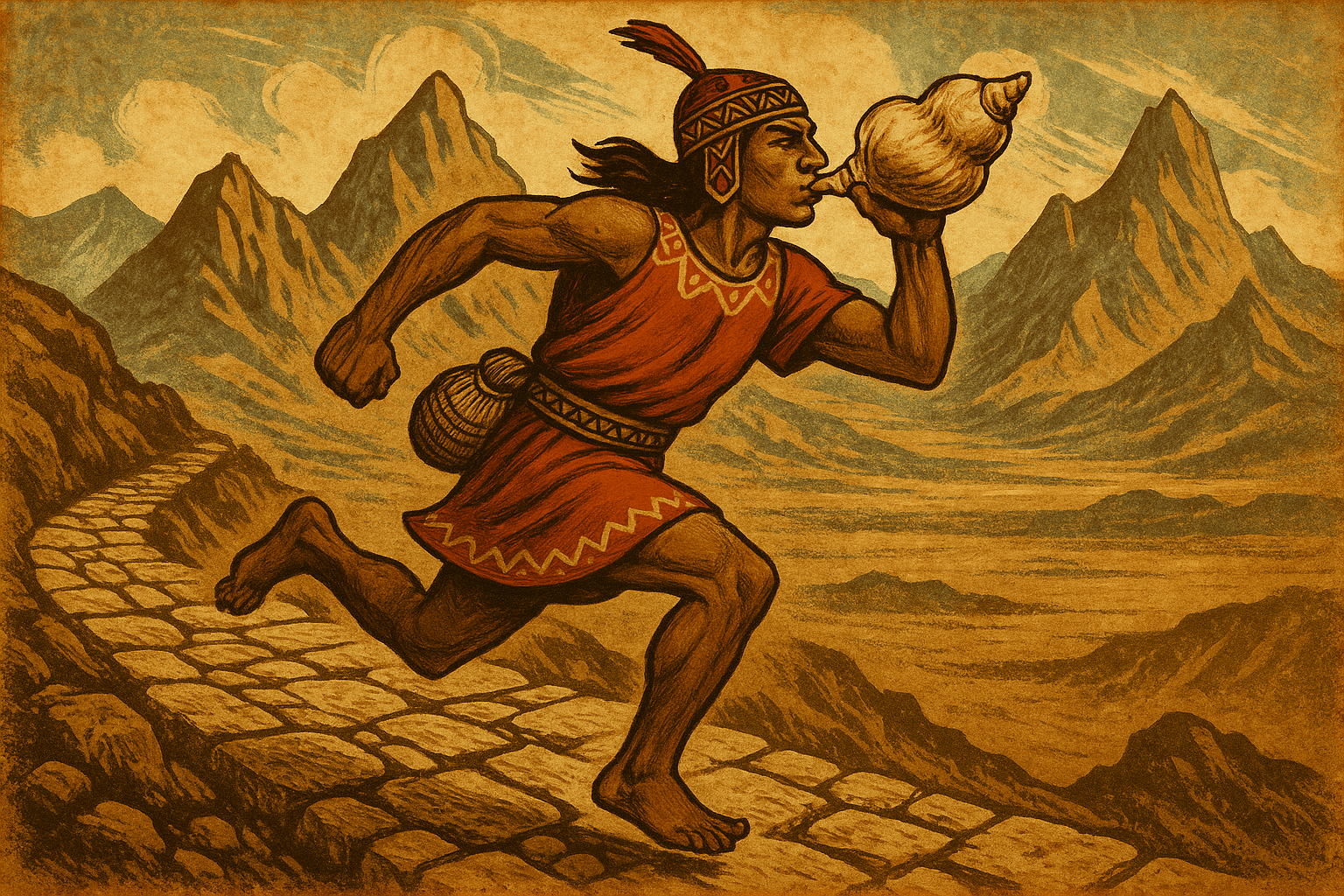These were no ordinary messengers. The Chasquis were the elite, indefatigable runners who formed the nervous system of the Inca Empire, transmitting crucial information, decrees, and even fresh goods across its expanse with astonishing speed. They were the lifeblood of a civilization without a written alphabet, a living, breathing internet of the ancient world.
The Great Inca Road: A Highway for Runners
The Chasqui system was only possible because of another monumental Inca achievement: the Qhapaq Ñan, or the Great Inca Road. This intricate network of over 40,000 kilometers (25,000 miles) of roadways was an engineering marvel, traversing some of the most difficult terrain on Earth. These were not just dirt paths; they were paved, graded, and equipped with stairs to scale steep mountainsides and suspension bridges to cross deep gorges.
Crucially, stationed along these roads at intervals of roughly 10 to 15 kilometers, were small relay stations known as tambos. These were more than just rest stops. A tambo was a shelter where a Chasqui could find food, water, and a place to rest before his next turn of duty. Most importantly, it was where he waited, ever-vigilant, for the arrival of an incoming runner.
Forging the Ultimate Messenger
Becoming a Chasqui was not a matter of choice; it was a calling and a duty, often passed down through families as part of their mit’a, or mandatory public service. The selection process was rigorous. Only the most physically fit, agile, and trustworthy young men, typically between 18 and 25 years old, were chosen. Loyalty was paramount, as they would be entrusted with state secrets.
Their training was relentless and began in childhood. They learned to be exceptional long-distance runners, building incredible lung capacity to function at high altitudes where the air is thin. They were trained to navigate the roads by day and night, in freezing mountain cold and blistering coastal heat. Beyond physical prowess, they also had to possess sharp memories, as many of the messages they carried were oral. A single forgotten word could alter a royal decree or misrepresent a military report.
A Relay Race Against Time
The genius of the Chasqui system was its relay format. No single runner covered the entire distance. Instead, it was a perfectly synchronized, non-stop human relay race.
Here’s how it worked: a Chasqui would begin their leg of the journey, running at top speed. As he neared the next tambo, he would sound a pututu—a trumpet made from a conch shell—to announce his approach. Alerted by the call, the next Chasqui would emerge from the tambo and begin running alongside the incoming messenger. For a few hundred meters, they would run together, stride for stride, as the oral message was passed, or a precious object was handed over. The exchange was seamless, ensuring that no momentum was lost. The fresh runner would then sprint off on the next leg of the journey, while the exhausted runner would rest and await his next turn.
This system was incredibly effective. It is estimated that a message could travel up to 240 kilometers (150 miles) in a single day. To put that in perspective, a vital message from Quito (in modern Ecuador) could reach the imperial capital of Cusco (in Peru) —a distance of nearly 2,000 kilometers—in just over a week. The Spanish chronicler Pedro Cieza de León was so impressed that he wrote:
“The Incas invented a system of posts… so organised that neither man nor horse could have competed with them.”
More Than Just Words: The Cargo of the Chasqui
While oral messages were a primary duty, the Chasquis carried a variety of important items in a bag called a qollqa. Among the most significant of these was the quipu.
A quipu was a complex arrangement of knotted, colored strings made from llama or alpaca fiber. In the absence of a writing system, the quipu was the Inca’s primary tool for recording and communicating information. The colors of the strings, the types of knots, and their positions all held specific meanings. While we are still deciphering their full complexity, it’s understood they were used to record census data, tribute obligations, calendar information, and military statistics. A Chasqui carrying a quipu was essentially transporting a detailed spreadsheet.
But their cargo wasn’t limited to data. In a remarkable display of the system’s efficiency, the Chasquis were also used to transport luxury goods for the Sapa Inca. One of the most famous examples is the delivery of fresh fish. Runners could bring fish from the Pacific coast to the emperor’s table in Cusco—over 3,200 meters (10,500 feet) high in the Andes—in less than two days, ensuring it was still fresh upon arrival.
The Legacy of the Runners
The Chasquis were the sinews that bound the mighty Inca Empire together. Their endurance connected the emperor to his generals, governors to their districts, and the mountains to the sea. They were a testament to human potential, an incredible feat of organization, discipline, and physical stamina that allowed a complex society to flourish in one of the world’s most challenging environments.
Today, as we send information across the globe in an instant, it is humbling to remember the Chasquis. They represent a powerful reminder that for centuries, the most advanced communication network in a continent was powered not by electricity or code, but by the determined legs and unwavering spirit of the runners of the Inca Empire.
